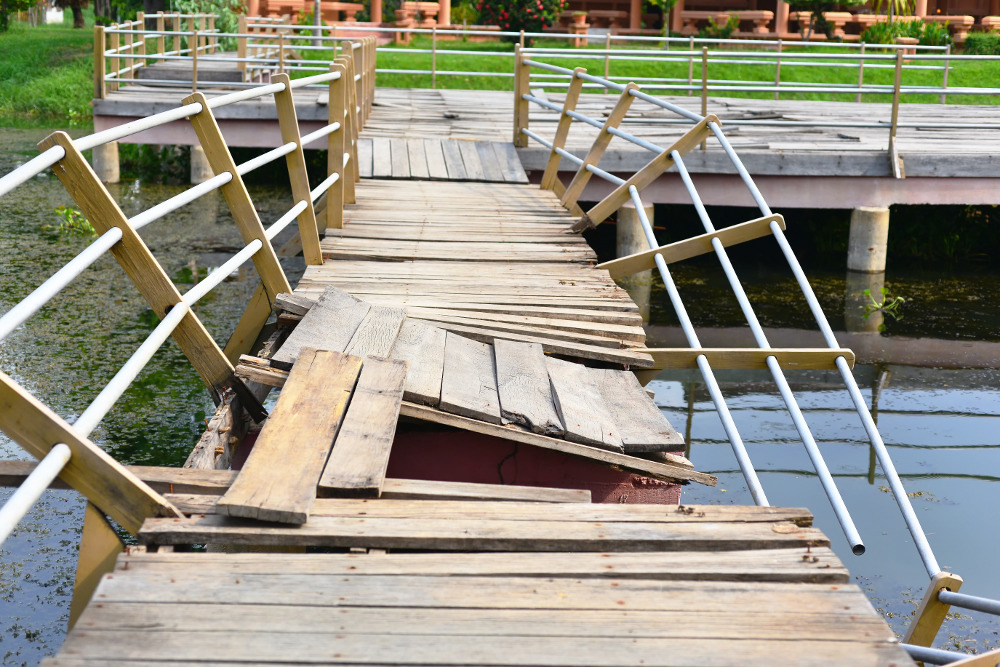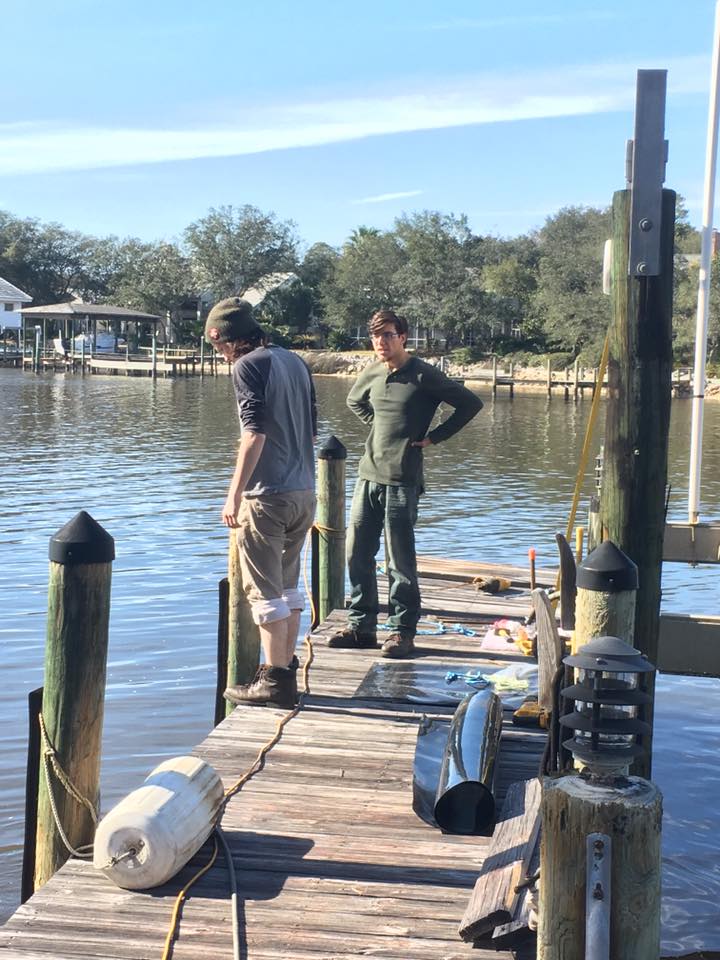Common Concerns That Cause Costly Dock Repairs
Wiki Article
Reliable Dock Repair Techniques: Making Sure Structural Stability
Guaranteeing the architectural stability of docks via effective repair techniques is vital for the longevity and security of aquatic facilities. This entails a multi-faceted approach beginning with thorough assessments utilizing sophisticated technologies like sonar tools and remotely operated lorries (ROVs) to discover both noticeable and hid problems. Ultimately, selecting the right fixing materials, such as corrosion-resistant alloys and composite products, is important for sturdiness. Structural support techniques, consisting of the execution of cross-bracing systems and load-distribution plates, play an important role in mitigating stress factors. Nonetheless, the value of these strategies comes to be apparent when checking out advanced repair techniques and preventative maintenance techniques.Evaluating Dock Damages
Examining dock damages is an important initial step in ensuring the architectural honesty and security of any docking facility. This first examination includes an extensive inspection to identify both noticeable and hidden problems. Key elements to take a look at include the dock's structure, pilings, decking, and equipment. Each part must be looked at for indications of wear, rot, rust, or other forms of degradation that could endanger the architectural honesty.Architectural designers or qualified examiners normally perform these evaluations utilizing specialized techniques and tools. For circumstances, undersea examinations might use sonar equipment or from another location ran lorries (ROVs) to detect submerged damage. Over water, visual evaluations are complemented by utilizing wetness meters and other diagnostic tools to uncover underlying concerns not instantly visible to the naked eye.

Choosing Repair Service Materials
Selecting the proper repair work products is a pivotal action in the dock repair procedure, one that directly influences the longevity and efficiency of the repaired framework. Product option need to be driven by factors such as ecological conditions, load-bearing requirements, and compatibility with existing dock elements. For example, timber is a typical choice for docks due to its all-natural durability and visual charm. However, choosing the best type of wood, such as pressure-treated lumber or naturally rot-resistant types like cedar or teak wood, is critical to hold up against water atmospheres.Along with timber, composite products are progressively prominent due to their sturdiness and low upkeep demands. Compounds, generally made from a mix of plastic and timber fibers, use excellent resistance to rot, pests, and UV damages. For steel docks, picking corrosion-resistant alloys such as galvanized steel or marine-grade light weight aluminum is crucial to prevent corrosion and make sure architectural stability in saline water problems.
Epoxy resins and marine-grade sealants are indispensable for repairing fractures and securing joints, offering a water-proof barrier and boosting the dock's overall toughness. By meticulously picking top notch products, dock repair services can accomplish resilient outcomes, thus guarding against future destruction and making certain risk-free, reputable usage.
Structural Reinforcement Strategies
Reliable architectural support strategies are important in guaranteeing the security and long life of dock repairs. This approach is especially efficient for anchors exposed to hefty loads or severe environmental problems.An additional vital technique is the application of fiber-reinforced polymers (FRP) These materials use high strength-to-weight ratios and superb resistance to deterioration, making them optimal for enhancing concrete or wood docks. FRP can be used in sheets or strips and bonded with epoxy resins to boost structural stability.
Bracing and securing systems likewise play an important role in architectural reinforcement. Cross-bracing, using steel or wood beams, can counteract lateral forces, minimizing swaying and activity. Anchoring systems, such as helical piers or driven stacks, provide a steady structure by moving tons to much deeper, more secure soil layers.
Last but not least, the assimilation of load-distribution plates can help distribute weight more evenly across the dock's surface, alleviating local stress and anxiety points. These strategies collectively make sure that anchors continue to be secure and robust, qualified of withstanding the roughness of their operational setting.
Advanced Repair Techniques

One more innovative technique includes undersea welding, which allows for repair moved here services to be conducted without the need to dewater the location. This method is specifically beneficial for addressing structural problems in immersed dock components, making sure very little disruption to procedures. Boosted welding methods, paired with robot systems, deliver accuracy and dependability, thus expanding the life-span of the dock.
In addition, cathodic protection systems are applied to stop rust in metallic dock structures. By utilizing sacrificial anodes or pleased present systems, these techniques effectively minimize the electrochemical procedures that result in product deterioration.
Last but not least, progressed tracking modern technologies, such as structural health monitoring (SHM) systems, provide real-time information on the condition of dock structures. These systems enable proactive upkeep and timely treatments, inevitably guaranteeing the long-term structural integrity of the dock.
Maintenance and Prevention
Maintenance and avoidance are essential ideas that underpin the long life and safety and security of dock structures. Routine examinations are paramount, allowing for early detection of deterioration, potential weaknesses, and environmental impacts. A positive approach, including routine look for rust, rot, and architectural shifts, mitigates costly repair work and lengthens the dock's functional like it life.Safety nets should include using protective finishings to steel parts to defend against rust and making use of cured wood to withstand degeneration. Additionally, making sure appropriate drain and ventilation can protect against water build-up, which is a common root cause of structural destruction. Including top quality materials and adhering to supplier guidelines throughout construction and repair stages additionally play vital roles in enhancing durability.

Training employees in dock maintenance best methods ensures consistent application of safety nets. Leveraging technical breakthroughs, such as drones for assessments and sensing units for real-time monitoring, can further enhance upkeep efforts. By prioritizing maintenance and avoidance, dock owners can guarantee architectural stability, operational security, and cost-efficient management over the dock's life-span.
Conclusion
In conclusion, preserving the structural honesty of aquatic centers demands extensive dock repair techniques. Advanced repair strategies, combined with regular maintenance methods, make certain the dock continues to be secure and functional under varied environmental conditions.Ensuring the architectural integrity browse around this web-site of docks with reliable repair techniques is vital for the durability and safety and security of aquatic centers.Picking the ideal fixing materials is a critical action in the dock restoration procedure, one that straight influences the long life and efficiency of the fixed framework.Effective structural reinforcement methods are crucial in making sure the security and durability of dock repair services. By prioritizing maintenance and prevention, dock proprietors can make certain structural stability, operational security, and cost-effective monitoring over the dock's life-span.
In conclusion, keeping the structural honesty of aquatic centers demands comprehensive dock repair service methods.
Report this wiki page